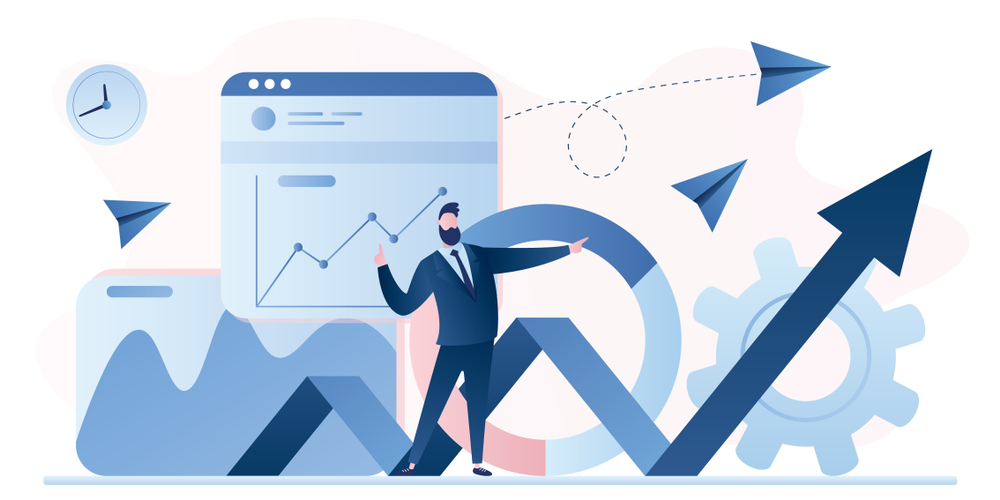Today, the customers are looking for new ways of engaging with the business. Customers developed new expectations and started focusing more on the outcome rather than on the ownership. Instead of generalization and planned obsolescence, they search for customizations and improvement while engaging with the business. It is where subscription comes into the picture.
What is a subscription business model?
A subscription business model involves a recurring revenue model, which allows the businesses to leverage relationships with their customers while creating a steady stream of income. Customers pay for subscriptions either monthly or annually for the product or service. After a certain period, they have the option of renewing their subscription.
As a customer, you enjoy the convenience of auto repurchasing the same product or service, which you might require in the future. As a business, you retain your customers for future sales and do not re-engage with them frequently.
The change in the business world
The old business world focused mainly on selling their products and services. The businesses remained busy acquiring new customers, billing for one-time transactions, and shipping their manufactured items. However, the new era brought changes to the ways businesses looked at their customers.
Businesses are becoming more customer-centric and they are engaging themselves in building stronger and long-term relationships with their customers. Customers are now looking for subscriptions rather than static offerings or a single product, as subscription meet customers’ requirements.
Every business needs to bring innovation and a new way of thinking while building relationships. Instead of concentrating on their ‘products’ or ‘transactions’, the Subscription Economy firms are laying maximum focus on their ‘customers’. The secret to their growth and expansion lies in the delivery of multi-channel experiences and services, which strive to improve over time.
Pay attention if you have a business in the subscription economy. You need to retain your focus on the existing subscribers, accounting for recurring revenue monitoring usages and inventing new paths in delivering the value towards your loyal customers plays a vital role.
Shifting towards a subscription economy
The businesses, while retaining their customers focused more on customer satisfaction and developed innovative strategies for selling their products and services. Over the past nine years, customers have experienced an explosion of new business models. The businesses focused on monetizing their long-term relationships with their customers rather than focusing on the traditional methods.
The growth in the subscription economy
According to a recent Gartner study, 35% of the Global 2000 companies started generating revenue through subscription-based revenue models by 2015. Another study in The Economist stated that around 51% of the companies surveyed in the UK, the USA, and Australia changed their process of setting prices and delivering their commodities.
The Subscription Economy firms monetized their revenue goals and client relationships in the cloud. With the boom in the subscription business model, the market sales increased from $57 million in 2011 to $2.6 billion in 2016. Economics experts predict, in 3-5 years, 80% of businesses have the potential in following a digital consumption strategy.
Subscription economy in India
Let us move a little to the past and trace the beginning of the recurring revenue or the subscription economy in India. The traditional milkmen in India operated in the same process that we term the subscription economy. However, they operated offline and lacked a streamlined manner of functioning.
The media and publication businesses in India emerged as the earliest players in leveraging online subscriptions in India. The OTTs or over-the-top media services such as Amazon Prime, Netflix, and Hotstar, offered the most engaging content along with a convenient way of consumption. It resulted in attracting several Indians to become their loyal customers.
With time many sectors such as hospitality and reservation applications, FMCG, insurance and banking, and food industries launched their applications. Assistance providing applications like Uber, UrbanClap, MakeMyTrip (MMT), Zomato and several other firms realized the potentiality of the subscription economy, thereby making the much-needed shift.
Subscription economy: the position of India in the world
Over the 7.5 years, the Subscription Economy continued to thrive the best, with a growth of over 350%. It is because of consumers who preferred and demanded more access to convenient digital services rather than going for the ownership of physical products. IDC had predicted that, by 2020, over half of the largest global enterprises would depend on their ability in creating digitally enhanced products and services.
Although the subscription model became famous for businesses in the western world, it took time for it to get a foothold in the Indian market. However, the success of popular brands like Hotstar and Amazon Prime has created an enormous market for subscription businesses in India. Currently, India experiences a boom in the e-commerce sector.
More than 472 million people, which accounts for 40% of the Indian population, uses the internet. The massive penetration of the internet made India, the second-largest user base in the world, thereby, increasing the growth of the Indian e-commerce market.
During the last seven years, the subscription firms located in the continents of Europe, Asia Pacific, and North America experienced a growth in their sales by 30%. Besides, the market represented an 18% CAGR (Compound Annual Growth Rate), which is five times faster than the combined revenues of the S&P 500 companies and the US retail sales.
UPI Autopay: the latest invention of the subscription economy
UPI, as the new system of payments, experienced a massive leap between 2016 and 2020. The NCPI data suggest payments on UPI in June 2020 reached an all-time high record with 1.34 billion transactions, with the amount reaching about 2.62 lakh crore. Now the UPI payment system has become the preferred method of financial transaction among Indian consumers, thereby overtaking credit and debit cards and net banking.
How has the subscription economy changed during the pandemic crisis?
The global pandemic crisis redefined the future of remote work and self-service. However, the market experienced a major change in the behavioural trends of the customers. With an increase in the expectations of the customers, regardless of the size and sector of the business, the change in consumer behaviour paved way for the emerging subscription economy.
Another change brought by the pandemic was around how the consumers consumed the contents. While the traditional entertainment industry faced a huge struggle during the global crisis, subscription-based services, such as Disney+, Netflix, and Amazon Prime, experienced a rise. A recent report by Ofcom stated that in the UK, consumers, during the lockdown, spent watching TV approximately 6-hours and 25-minutes every day. Moreover, nearly 12 million people decided to join a service they never opted for before. The consumers showed great interest in the news updates along with a desire to remain informed during the phase of uncertainty. It drove the media sector and digital news to face a similar boost.
Besides, in comparison to 2019, there has been a rise by 400% in the OTT streaming subscriptions between March and May 2020. Within nine months, Netflix added over 10 million new subscribers, and Disney+ reached 60 million subscriptions.
The takeaway
Instead of focusing on selling their products and services based on ownership, the subscription business model does its best to investigate “What my customers’ needs?” The business model, hence, enhances a customer’s loyalty and builds a stronger relationship as a brand. Businesses need to understand and implement a subscription economy, as it affects the way the market operates and sells.







